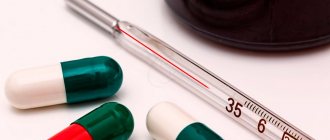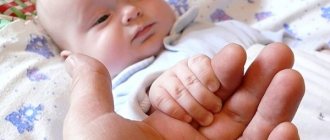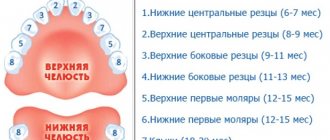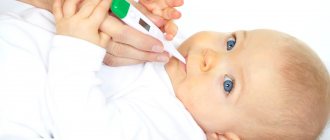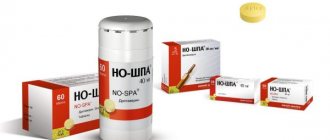Types of diarrhea
Diarrhea in an 8-month-old child is expressed not only by the presence of loose stools. There are 6 types of the disease, each of which is characterized by signs and manifestations.
Infectious diarrhea
Its appearance is associated with the penetration of an intestinal infection into the body due to poisoning with poor-quality products, when infected with dysentery or salmonellosis.
Alimentary diarrhea
The main reason for its appearance is a sudden change in diet, a negative reaction to new foods introduced into the baby’s diet, and an allergic reaction to medications.
Dyspeptic diarrhea
If, after eating food, an 8-month-old child has poor production of enzymes for high-quality digestion of food.
Toxic
In children, this type of diarrhea can occur as a result of poisoning with any chemicals: arsenic, mercury, salts of heavy metals.
Medication
This type of diarrhea is associated with the baby taking medications. Antibiotics have a particularly negative effect on the gastrointestinal microflora, causing dysbiosis, which causes loose stools.
Psychological diarrhea
With this type of diarrhea, various psychological factors play an important role: poor sleep, stress, changes in habitual lifestyle: moving to a new place, disruption of the daily routine, fear or fright. In this case, loose stools may pass on their own when the baby is again in a comfortable environment.
Help a child
How to treat the baby? Firstly, it is unacceptable to give a child antibiotics or other drugs other than antipyretics. The exceptions are enterosorbents - smecta, activated carbon. Secondly, ensure you drink plenty of fluids. Thirdly, do not wrap yourself in warm clothes and blankets. Fourth, call an ambulance.
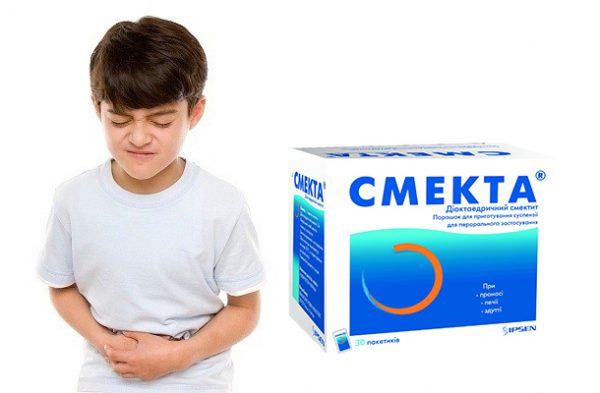
To prevent severe dehydration, it is necessary to give rehydrants. If you don’t have Regidron in your home medicine cabinet, you can prepare the medicine yourself:
- per liter of boiled water add 0.5 tsp of soda, a teaspoon of table salt and a tablespoon of granulated sugar;
- per liter of boiled water add 0.5 tsp of soda, the juice of two oranges, 8 tsp of granulated sugar, 1 tsp of regular salt;
- You can give your child still mineral water and acidified tea.
Important! If you have diarrhea with fever, you should not eat fatty, fried or heavy foods: you must follow a diet.
Starchy foods have a fixing effect - jelly, rice water, porridge, carrots. You can give blueberry compote or jelly to drink - it helps well with diarrhea. A decoction of pomegranate skins has been time-tested: it has an astringent property and disinfects the intestines. As a drink, you can give dill water, fennel and chamomile tea: the child’s diarrhea will go away sooner.
What should be the treatment: black diarrhea with an odor? If the stool is not colored by activated carbon or the consumption of blueberries, this symptom indicates a very serious illness. For example, a child may have internal bleeding. Sometimes such diarrhea is accompanied by profuse vomiting.
What should be the treatment for alarming symptoms - diarrhea with fever? At home, before the medical team arrives, it is necessary to bring down the fever and provide the child with plenty of fluids. No independent treatment procedures can be carried out. Remember that the body of a one-year-old or 2-year-old baby can become dehydrated in a matter of hours, so take care of restoring fluid in the body - give Regidron or mineral water.
Particular care must be taken with infants, as they have a weak self-defense function of the body. Call emergency services immediately, bring down the fever and drink water from a spoon or pacifier every 10 minutes.
Young children often have loose stools . Every parent faces this problem. Mostly, diarrhea goes away quickly, but if diarrhea is accompanied by fever and vomiting, this is a bad symptom. It means that the child has caught an intestinal infection . What to do if a child has diarrhea and fever? How dangerous is this to health?
Causes of loose stools without fever:
- Psychological stress;
- Side effect from medications taken;
- Eating disorder;
- Teething;
- The presence of worms in the child’s body;
- Lack of carbohydrates;
- Dysbacteriosis;
- Gastritis;
- Failure to comply with hygiene rules.
As a rule, in this case, loose stools go away on their own during the day.
Causes of diarrhea in a baby
Diarrhea in an 8 month old baby can occur for a number of reasons. The main ones include:
- Food poisoning due to food that has expired, poor food quality, violation of proper food preparation standards, infection with E. coli or staphylococcus.
- If parents have introduced unusual or new foods into the diet.
- When moving or changing climatic conditions.
- With poor water quality.
- If your baby is afraid or anxious.
- In stressful situations.
- If parents have introduced cow's milk into the diet, and he has a negative tolerance to lactose.
- If the intestines are affected by an intestinal infection.
- If your baby is being treated with certain types of medications, the side effects of which include loose stools.
- If your baby is infected with intestinal flu.
- Eating sour or salty foods.
- For colds and flu.
- Due to overeating.
Diarrhea and temperature 38 in a child. How to help and what to do
To help your baby you need:
- Call a doctor or ambulance;
- Do not give antibiotics, you can give Smecta, activated carbon.
- To prevent the infection from spreading to other people, isolate the patient until an accurate diagnosis is made.
- Carefully examine the child to see if he has any accompanying signs.
- Do not lower your temperature until the doctor or ambulance arrives.
- But if the child has a temperature of 38 °C, 39 °C, then in this case an antipyretic should be given.
- If the baby is one year old, then candles should be used to reduce the temperature. If the child is over two years old - syrup.
To avoid dehydration and improve the child’s condition, you can make the following solutions:
Add a teaspoon of salt, one tablespoon of sugar and half a teaspoon of soda to one liter of boiled water.
To one liter of boiled water, add one teaspoon of salt, eight teaspoons of sugar and fresh orange or lemon juice.
Prepare one of the solutions. Give it to your child in small portions every five minutes .
Diagnostic methods
To clarify or confirm the diagnosis, it is necessary to conduct a laboratory test:
- Stool analysis for dysbacteriosis;
- Stool analysis to detect parasites;
- kilogram;
- General blood analysis;
- Blood chemistry. It detects dysfunction of the liver or pancreas;
- Ultrasound of the abdominal cavity. Allows you to detect the inflammatory process of the gallbladder, liver, pancreas.
Based on the test results, the doctor will prescribe treatment.
Causes of intestinal infection in children
The causative agents of intestinal infections are bacteria (Salmonella, Campylobacter), viruses (Rotovirus, Adenovirus) and protozoan fungi (Giardia, Coccidia). Infection occurs through food, dirty hands and dishes, toys. Pets can also be carriers .
Intestinal infection can occur in mild, moderate and severe forms. It depends on the child's immunity.
Treatment with drugs
- To eliminate fever and diarrhea in a child, the following medications must be given: activated carbon, Smecta, Polyphepan, Enterosgel.
- Paracetamol-based medications are given to reduce high fever.
- To avoid dehydration, you need to drink a lot of liquid: mineral water, compote, tea, Regidron.
- In case of food poisoning, it is necessary to rinse the stomach.
- If a child has bloody diarrhea, antibiotics are prescribed.
- To restore the intestinal microflora, bifidobacteria or lactobacilli are taken.
During treatment you must adhere to the following diet:
- If the baby is not yet twelve months old, then you do not need to stop breastfeeding.
- If your child is fed formula, then switch to soy-based formula during the recovery period.
- If your child is over a year old and eats adult food, then during this period you should eat cereals, vegetables, fruits, fish, chicken, and yoghurts.
- Products must be steamed or boiled.
- Salty, fried and sweet foods should not be consumed;
- Before eating, it is better to wipe cooked food so that there are no lumps.
The following folk remedies will help cope with diarrhea:
- Starch diluted with water;
- Rice broth;
- Oak bark decoction;
- Decoction of pomegranate peels;
- Fresh blueberries;
- Infusion of fennel and dill;
- Carrot puree;
- Mint tea;
- St. John's wort decoction;
- Chamomile tea.
It is better to use such folk remedies after consulting a doctor . You should not treat yourself, as this can lead to complications.
Complications
- Dehydration of the body;
- Loss of creation;
- Convulsions;
- Death;
- After treatment with an antibiotic, dysbacteriosis may appear;
- Lactose deficiency;
- Changes in bowel function;
- Rectal prolapse.
To prevent the occurrence of such complications, it is necessary to seek help from a doctor in time.
What to do to protect your baby from diarrhea.
To prevent diarrhea from tormenting your child, you must follow some rules:
- Food must be of high quality, without flavor enhancers and dyes.
- Strengthen your immune system.
- Eliminate mushrooms, smoked foods and chocolate from your children’s diet.
- Nutrition should be balanced.
- Teach your child to wash their hands, fruits and vegetables before eating.
- Do not bathe your child in unfamiliar bodies of water.
- Meat, fish, eggs must be heat treated.
- Limit your baby from contact with sick people.
Follow these simple rules . Only in this case will children grow up healthy. Preventing a disease is easier than curing it!
Diarrhea in children is a common problem that causes a lot of discomfort and trouble for everyone. Most often there is nothing serious behind it, and it goes away in the near future. But if it is accompanied by fever, this is an alarming symptom that may indicate a dangerous infection that has penetrated the small body. Therefore, diarrhea and fever require special attention. First of all, you need to figure out how dangerous it is.
Symptoms
Parents will know what to do and how to treat their child if they study the symptoms of diarrhea. These also include:
- nausea or vomiting;
- temperature and fever;
- stool may change color;
- there may also be mucus or blood clots in the stool;
- moderate or unbearable abdominal pain;
- strong gas formation.
Even if parents know what to do in this situation and what remedies can be used for diarrhea, self-medication in children under one year of age is not recommended. There are cases when diarrhea causes complications that can pose a danger to the health and life of the child. Dehydration is especially dangerous, as a result of which the mucous membranes become dry and the child may experience convulsions. In this case, you should call an ambulance as quickly as possible. This symptom requires professional medical attention.
First aid
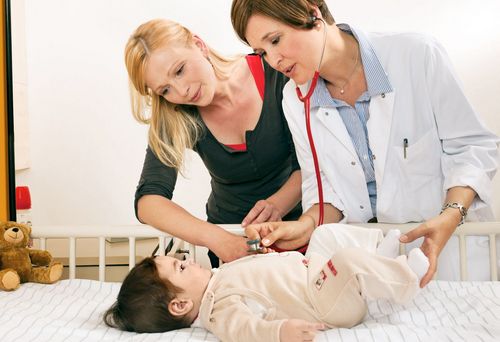
What to do if a child has diarrhea and high fever? To avoid dehydration and to alleviate its condition, parents are encouraged to take a number of effective measures.
- Call a doctor at home.
- Do not panic.
- Do not give antibiotics.
- Isolate from others until the nature of the diarrhea is clarified in order to prevent further spread of the infection to other people.
- Carefully examine the child for the presence of accompanying symptoms, which can help understand the reasons for what happened.
- Do not lower your temperature until the doctor arrives.
- If there is still a long time until professional medical help, and the child has diarrhea and a temperature of 38°C, you can give an antipyretic based on paracetamol. Aspirin is contraindicated for children under 12 years of age.
- If a one-year-old child has diarrhea and fever, antipyretic medications are recommended in the form of suppositories, if 2 years and older - in the form of syrup.
- Enterosorbents allowed: activated carbon, Enterosgel, Smecta.
To avoid dehydration, you can prepare the following rehydration solutions at home.
In 1 liter of boiled water at room temperature, dissolve a tablespoon of granulated sugar, a teaspoon of table salt, and half a teaspoon of baking soda.
- Recipe No. 2 (if the child is not allergic to citrus fruits)
In 1 liter of boiled water at room temperature, dissolve 8 teaspoons of granulated sugar, a teaspoon of table salt, fresh juice squeezed from 2 oranges (can be replaced with grapefruits).
In case of diarrhea and fever, it is recommended to give the child one of these solutions every 5 minutes in small portions. This will avoid dehydration of the body and improve its condition. Now all that remains is to wait for the doctor who will make a preliminary diagnosis, but it will still have to be confirmed in the laboratory.
This is interesting. Moisture in the armpit is a guarantee of quick and accurate temperature measurement, since moist skin conducts heat better than dry skin.
Treatment
What to do if your 8-month-old baby has diarrhea. Pay attention to the frequency of going to the toilet, the color and consistency of stool.
Mild diarrhea
It is not frequent and without pain. The child's lifestyle has not changed. In this case, you can give decoctions of medicinal herbs, slightly change your diet and give more fluids.
Diarrhea is a protective reaction of the body and tries to cleanse the intestines of harmful substances and toxins. And if the diarrhea is not prolonged, it is not necessary to resort to taking medications.
Prolonged diarrhea
If diarrhea is prolonged, and stool is not very abundant, but lasts more than 5 days, medical attention is necessary. There is a possibility of infection in the intestines. In this case, astringent decoctions and medications are used. It is also worth paying attention to why lingering diarrhea appeared. If it is associated with stress or with moving and changing climate conditions, it is enough to adjust the diet and give the baby as many positive emotions as possible.
With blood
In this situation, you need to urgently consult a doctor or call an ambulance. Feces with blood clots can signal pathologies and serious diseases. Quite often, this symptom indicates intestinal obstruction. This requires first of all surgical treatment.
With severe pain
Pain in the baby's tummy requires the appointment of an antispasmodic. Such a symptom should be a reason to visit a doctor. Quite often, with appendicitis or intestinal obstruction, diarrhea with pain or discomfort in the baby’s tummy is possible.
With mucus
First of all, there may be a rotavirus infection, an intestinal infection, or diseases of the gastrointestinal tract. Perhaps your baby is starting to teethe. This may also be due to poisoning from low-quality products.
Parents should consult a doctor, and until the doctor arrives, the child should be given plenty of fluids to drink. Self-medication in this case is contraindicated. The only thing you can give is activated carbon.
Green stool color
The most common reason for this color of stool is the sudden introduction of new foods into the baby’s diet. If this is a common reaction to foods, there is no need to treat such diarrhea. As soon as the child gets used to the introduced product, the diarrhea will go away on its own.
But it may be associated with the presence of infections. In this case, you need to visit a doctor to prescribe treatment.
Causes
The main causes of diarrhea with fever include:
- viruses;
- poisoning;
- surgical pathology;
- other diseases and pathological conditions.
Viral infection
In 20-30% of cases of diarrhea in children are of viral origin.
These symptoms most often cause:
- enterovirus, reovirus or rotavirus infections;
- gastroenteritis caused by coronavirus, astrovirus, coronavirus or Norfolk virus;
- respiratory viral infections, which are accompanied by intestinal syndrome and diarrhea (adenovirus, parainfluenza, rhinovirus);
- childhood viral infections (measles, mumps, chicken pox).
With viral diarrhea, damage occurs to the small intestine, less often the stomach (enteritis, gastroenteritis).
The disease is manifested by persistent diarrhea with frequent loose, watery stools, abdominal pain, fever from 37 to 39 º C, vomiting or regurgitation, lethargy, and drowsiness.
In case of respiratory or childhood infections, sore throat, runny nose, cough, inflammation of the conjunctiva, and rashes are noted.
A distinctive feature of viral diarrhea is the absence of pathological impurities in the stool (mucus, greens, blood). Their appearance indicates the addition of bacterial microflora and/or the development of enterocolitis.
The most common causes of diarrhea with fever in a child are enterovirus and rotavirus infections. These intestinal infections in young children are severe and quickly cause dehydration.
Therefore, if a child under 3-5 years of age develops frequent watery stools, fever, vomiting and increasing general weakness, it is necessary to seek medical help.
Poisoning
Diarrhea, vomiting and increased body temperature are symptoms of poisoning by various toxic agents (low-quality food, medicines, poisonous plants or mushrooms, household chemicals, poisons from animals and insects).
Foodborne illnesses and botulism
Foodborne toxic infections are poisonings caused by toxins accumulated in food products after the death of pathogenic microorganisms (staphylococcus, E. coli, Proteus, Klebsiella). They are manifested by frequent watery diarrhea, repeated vomiting, fever with increasing lethargy and drowsiness.
Most often, these poisonings develop after eating stale or low-quality dairy products, creams, soufflés made from milk, cows with mastitis, or contamination of dairy products with pathogenic microorganisms during the production of confectionery products.
Particularly dangerous are toxic infections caused by toxins of anaerobic bacteria (clostridia) - botulism. This disease develops after eating canned food, which gradually accumulates a large amount of botulinum toxins. When a small amount of toxin gets into the stomach and intestines, the child develops loose stools, vomiting, cramping abdominal pain, and flatulence. If assistance is not provided in a timely manner, botulinum toxin continues to be absorbed into the blood and causes damage to the nervous system (respiratory and visual impairment, flaccid paralysis).
Therefore, if a child develops diarrhea, vomiting and fever after eating canned food made at home (pickled mushrooms, caviar, home-smoked fish, canned meat), it is necessary to immediately call an ambulance.
Poisoning by other toxic factors
In young children, poisoning with various toxic substances is quite common:
- poisonous plants, mushrooms,
- poisons for rodents, insects,
- medications,
- household chemical products,
- vegetables and fruits treated or contaminated with fungicides, inorganic compounds, insecticides.
Adults should monitor what the child eats, strictly prohibit the consumption of medicines, unknown berries, fruits, mushrooms and seeds, and put poisons, medicines, acids, and alkalis in a safe place.
Other causes of diarrhea and fever:
Often, fever and diarrhea can also be signs of:
- acute surgical pathology (intussusception, peritonitis, appendicitis);
- inflammation of the digestive tract;
- bacterial intestinal infections, dysbacteriosis;
- teething syndrome;
- neurogenic diarrhea;
- congenital pathologies of the digestive system;
- parasitic infestations;
- intestinal cancer, leukemia;
- allergic enteritis.
Doctor's recommendations
- If dysentery or infection is detected, the doctor prescribes Fthalazol.
- Enterofuril quickly copes with intestinal infections, diarrhea, and restores the microflora of the digestive system.
- The drug Sulgin effectively treats diarrhea, colitis and dysentery.
- An effective remedy for diarrhea that has excellent astringent properties is Tannacom. This drug is harmless even for babies of one month. Also, this drug very quickly relieves spasms and relieves pain.
- If acute intestinal obstruction is not detected, Enterosgel can be given to the child.
- An excellent solution is to use the drug Polysorb, which quickly stops diarrhea and has an excellent adsorbing effect.
When treating diarrhea, probiotics must be used. The drugs include:
- Lactobacterin;
- Bifidumbacterin;
- Bifiform;
- Hilak Forte.
They not only cope with diarrhea, but also restore intestinal microflora.
Treatment methods
In case of diarrhea and increased temperature, it is necessary to treat the disease that led to such symptoms. At the same time, therapy should be carried out aimed at overcoming such unpleasant and dangerous symptoms. This is done in order to prevent dehydration and normalize the functioning of the stomach. For these purposes, medications and a special diet are used.
Drug therapy
To help the body cope with diarrhea, adsorbent agents are prescribed. These include Smecta, Enterosgel, activated carbon, Neosmectin, Polyphepan. A fairly effective way is to rinse the stomach with plain boiled water or use a weak solution of potassium permanganate.
Folk recipes
- For children 8 months of age, you can prepare rice water. To do this, you need 2 tablespoons of rice for 2 glasses of water. The rice is cooked until tender, but the water is not drained. Grind rice and water in a mixer. Give your baby a teaspoon to drink several times a day until the stool returns to normal.
- Dried blueberries or berry compote help. If you give dried berries, it is enough to take a teaspoon 3 times a day. But for such small children it is better to boil compote and give it to the baby in any quantity.
- Grind the pomegranate peel and pour a glass of boiling water over it. Leave for about an hour and give the child a tablespoon 3 times a day.
If the child does not have an intestinal infection or pathology, parents can help the child on their own. But if loose stools continue for more than 2-3 days, you should still consult a doctor.
An 8-year-old child has fever and diarrhea
Possible causes Associated symptoms First aid Diagnosis Treatment Complications Prevention
Diarrhea in children is a common problem that causes a lot of discomfort and trouble for everyone. Most often there is nothing serious behind it, and it goes away in the near future.
But if it is accompanied by fever, this is an alarming symptom that may indicate a dangerous infection that has penetrated the small body. Therefore, diarrhea and fever require special attention.
First of all, you need to figure out how dangerous it is.
Possible reasons
The danger of a situation when diarrhea in a child is accompanied by a high temperature is determined by the reasons that provoked such symptoms. They can be non-infectious or infectious in nature. The first group of factors rarely pose a threat and can be quickly treated.
Non-infectious factors
Diarrhea and a temperature of 37°C are usually observed - the thermometer rarely rises above this mark in the presence of the following factors.
Eating disorder: consumption of foods that are incompatible or difficult for the child’s stomach. Reaction to drugs.
Acetonymic syndrome, the causes of which, in turn, are a lack of carbohydrates, recent infectious diseases, and mental stress. Teething.
Failure to comply with hygiene rules. Helminthic infestations. Gastrointestinal diseases: gastritis, colitis, dysbacteriosis.
If diarrhea and fever are due to these reasons, the symptoms of intestinal distress should subside within a few hours, or less often, days.
Infectious factors
If an infection has entered a small body, the child may experience diarrhea and a temperature of 39°C - and this is not the limit. In such a situation, you need to urgently call a doctor. Dangerous diseases can be:
Intestinal rotavirus infection. Enterovirus. Rubella, scarlet fever, measles. Flu, sore throat, otitis media, nasopharyngitis. Dysentery. Salmonellosis.
If a child’s diarrhea is accompanied by a fever, parents should not wait until everything goes away on its own. The faster the reasons that caused them are identified, the more effective the help will be. Even before the doctor arrives and laboratory diagnostics are carried out, you can try to determine the disease yourself based on the clinical picture.
Scientific terminology. The medical term “diarrhea” comes from the ancient Greek word “διά-ρροια” - diarrhea, which translates as “to leak”.
Associated symptoms
If a child has diarrhea with fever, you need to monitor his condition, examine his body and take a closer look at the discharge. This will identify several more accompanying symptoms, which together will help make a more accurate diagnosis.
With blood
In medicine, diarrhea with blood and fever is called invasive (bloody) diarrhea. It is usually accompanied by general intoxication of the body and fever. This is a symptom of an intestinal infection.
With mucus
If a child has a fever and diarrhea with mucus, this may indicate the penetration of pathogenic microorganisms into the small body: cryptosporidium, salmonella, lamblia, enterotoxigenic or enteropathogenic coli, enteroviruses, rotaviruses.
With vomiting
If a child has a high fever, vomiting and diarrhea, which are accompanied by an unpleasant odor of acetone from the mouth, this is an acetonemic crisis. If the face turns pale and the feet and hands become cold, this is food poisoning.
With pain
If your baby has abdominal pain, diarrhea and fever, you need to look for the cause in the foods he ate during the last 24 hours.
With swelling of the gums
If the child is 3 years old or younger, carefully examine his oral cavity. Maybe he's just teething. If you find swelling, redness, or inflammation of the gums - so be it.
Rashes
Examine the child's body.
If there are characteristic rashes on the body or mucous membranes, diarrhea with fever may be a symptom of scarlet fever, rubella or measles. It may also be a sign of a drug allergy. This usually happens due to individual intolerance to iron-containing products. Cold symptoms
If the discomfort is accompanied by redness of the throat, enlarged tonsils, nasal congestion, cough or a sore throat, diarrhea with fever is explained by influenza, sore throat, nasopharyngitis or otitis media.
Be careful: diarrhea with fever in a child is usually accompanied by some other symptoms indicating a particular disease. The more accurate your observations are, the easier it will be to make a diagnosis and prescribe the correct treatment. In any case, fever is a serious reason to call a doctor at home. And before his arrival, try to provide first aid to the baby yourself.
Source: https://detishki.ahuman.ru/u-rebenka-8-let-temperatura-i-ponos/
